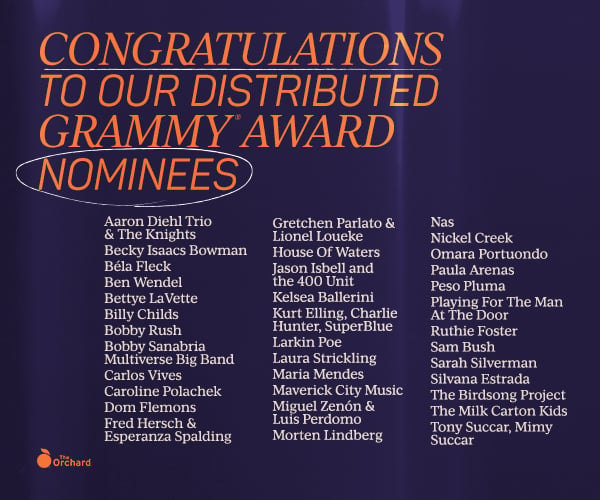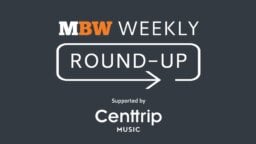Apple’s recent acqui-hire of A&R analytics startup Asaii is the latest milestone in a brief, crowded and as yet inconclusive history of data-driven ‘Moneyball’ in the music business.
As long as record stores have existed, data in some form has always played an important role in music marketing and promotion campaigns. But over the last five years, major labels and streaming platforms have been pouncing on data partnerships and startup acquisitions at an unprecedented rate, with the hopes of using algorithms to discover – and predict – the next big pop star.
This is an especially competitive space today because streaming services like Spotify and Apple Music are not only optimizing curation of third-party content, but also offering direct distribution or licensing deals, and bespoke marketing support, to select up-and-coming acts (a vertical that Asaii undoubtedly strengthens for Apple).

Does a data-driven culture help increase long-term copyright value for labels and publishers, and positive innovation of the business as a whole? And does using data to sign artists actually help music companies run themselves better and be more effective partners to artists, beyond A&R alone?
“Does using data to sign artists actually help music companies run themselves better and be more effective partners to artists?”
As the recorded music industry closes out its fourth consecutive year of growth in 2018, companies of all sizes are investing more funds into transforming themselves for the better through data.
The rise of A&R ‘Moneyball’, which drastically lowers both search costs for music companies and barriers to entry for emerging talent, may be a necessary component of this vision for the future.
But, as recent history has taught us, it’s not a panacea.

That was the year 300 Entertainment – the indie label founded by YouTube’s current Global Head of Music, Lyor Cohen – announced a partnership with Twitter that not only gave the label access to internal Twitter data, but was also intended to help Twitter develop analytics tools for 300 and other labels and artists.
Shortly after, Warner Music Group announced the launch of a branded sub-label with Shazam that would leverage Shazam’s app data to identify new signings and inform artist marketing campaigns. At the time, Warner’s former COO Rob Wiesenthal called the venture “the first crowdsourced, big-data record label.”
We have yet to see any tangible fruits from either deal – perhaps because those labels never predicted what came next.
Weeks after the Warner/Shazam announcement, Spotify acquired music data intelligence startup The Echo Nest for €50m – which, in hindsight, was a steal. In the following years, that acquisition would prove to be one of Spotify’s most powerful weapons in the streaming wars, as it carved out its differentiation via algorithmic recommendation channels such as Discover Weekly, Release Radar and Daily Mixes.

Within the span of six months in 2015, Apple acquired UK-based startup Musicmetric (shortly before launching Apple Music), Pandora bought Next Big Sound and Spotify acquired data science consulting firm Seed Scientific. These and several other music services continue to jockey for subscriber share today, such that high-quality, data-driven personalization and recommendation have become mere table stakes.
As previously mentioned, there are now deeper incentives for streaming platforms to invest in data that go far beyond optimizing the consumer experience.
“The majors are in somewhat of an existential conundrum, as they rush to claim their turf and preserve their value proposition in an increasingly data- and curation-driven marketplace.”
Apple’s recent acquisitions of Shazam and Asaii will inevitably feed the parent company’s goals of predicting and creating tomorrow’s music culture as much as curating it (and possibly help cut licensing costs in the process).
Such momentum has put the majors in somewhat of an existential conundrum, as they rush to claim their turf and preserve their value proposition in an increasingly data- and curation-driven marketplace.
As of press time, every single major label is hiring for several “data analyst” and “research analyst” positions, competing with streaming services (and every other tech and finance company) for talent.
Warner Music Group took the talent race one step further in March, acquiring algorithmic A&R startup Sodatone.
Meanwhile, there remain a handful of independent music analytics platforms on the market, including Soundcharts, Chartmetric, Indify and Instrumental, that are working to consolidate streaming metrics and put high-level, actionable data intelligence in the hands of artists and labels of all sizes.
Recent evidence suggests that acquisition is a highly probable end game for this ecosystem, as larger music and tech corporations continually race to understand and own the consumer.
Despite the fact that data can supposedly make certain processes cheaper and more efficient, A&R today is still an expensive, if not overpaid, business.
In November 2016, the IFPI published a report claiming that record labels spend $4.5 billion annually – or 27% of their total revenues – on A&R and marketing. That’s allegedly a higher proportion on R&D spend than what has been reported in some of the most research-heavy industries in the world, including healthcare, automotive and aerospace.
One curious piece of missing information from that report—and an elephant in the room when it comes to music innovation—is how data really plays a role in the way that $4.5 billion is spent.
To illustrate the ambiguity of the situation, consider how Billboard, Rolling Stone and The Wall Street Journal all published their own features this year about the expensive label bidding wars for hip-hop talent, in which majors are signing six- to seven-figure deals with rappers like Lil Pump, Juice WRLD, SahBabii, Brockhampton and the late XXXTentacion.
There are several common themes among those three features: labels’ desires to “get rich quick,” churning out music that “all sounds the same,” fears of a growing “bubble” that may burst in years or months – and a sense that labels are merely “throwing [artists] at the wall like spaghetti” and seeing what sticks.
This picture seems to fit the long-held stereotype of corporations prioritizing short-term hits over long-term value and creative confidence.
In these cases, data-driven A&R platforms like Asaii may play a helpful role in labels’ workflow by lowering the cost of discovery and lead generation, as well as determining meaningful audience momentum in the short term for, say, an unsigned DIY rapper against a controlled baseline of similar artists.
You can run the most advanced predictive models on your spaghetti to gauge whether it’s ready – but if your subsequent process is still throwing all of that spaghetti against the wall, what was the point of all that prep work?
But as Instrumental CEO Conrad Withey wrote for MBW last week, “the viability of businesses that work with artists… hangs on the ability to discover them, and then partner with them” (emphasis added).
The ability to partner meaningfully with artists beyond merely spilling ink on a contract is arguably a greater indicator of a music company’s integrity and long-term health – and something that most data-driven A&R platforms today do not address on their own.
You can run the most advanced predictive models on your spaghetti to gauge whether it’s ready – but if your subsequent process is still throwing all of that spaghetti against the wall, what was the point of all that prep work?

Part of what has made the ‘Moneyball’ approach so successful is the availability of clean, structured historical datasets around baseball, specifically related to in-game actions of batting, pitching and fielding. Public records of sports games established a solid institutional memory of performance upon which every present and future analyst could draw to inform their own models.
As of now, such clean and structured datasets – not just about surface-level streams and sales, but also about financial returns on marketing and social campaigns – are close to nonexistent in the music business, even internally within major labels.
This largely has to do with the supply chain of recorded music, which has become increasingly fragmented and disintermediated with technological advancements from both B2B and B2C perspectives.

Earlier this year, the video service established a new internal research division called Studio Production Science and Analytics. Its mission is to use data science to analyze and streamline all steps of the film production, marketing and distribution pipeline – including back-end functions like budget planning, location scouting and post-production editing, in addition to consumer-facing recommendation and promotion.
In the best-case scenario, Netflix becomes a valuable partner to burgeoning film directors and producers by streamlining otherwise costly procedures and freeing up more capital and mindshare to make the best creative work possible.
Spotify is taking a notably similar approach, asserting a financial stake in every step of music creation, marketing and distribution:
- Cloud-based creation—the company owns collaborative, cloud-based music studio Soundtrap, which is currently hiring a data scientist;
- Brick-and-mortar creation—Spotify owns and leases several physical recording studios around the world, and is currently hiring a facilities director;
- Licensing and distribution—as previously mentioned, Spotify is striking 50/50 rev-share deals with a growing number of unsigned artists;
- Audio and video marketing—Spotify has been making an aggressive push into podcasting and original video, and is currently hiring data scientists, producers and programmers for its podcast team;
- Live music—Spotify is partnering with Live Nation on live tours of playlist brands like RapCaviar, Who We Be and Hot Country, off the tail of generating over $40m in ticket sales in 2017 through its Fans First program.
Theoretically, Spotify could own the relationship with an unsigned artist (and strike fairer revenue deals) across most or all of these steps in the pipeline. In other words, a hypothetical artist could make a record using Soundtrap or in a physical Spotify Studio and upload it directly to the streaming platform, collaborate with Spotify on original, exclusive audio and video content and then perform for a packed, built-in audience on a live playlist tour.
While this isn’t by any means an ideal scenario for every artist (read: vertical integration and the dreaded ‘360 deal’), it drives the point home that merely finding the right talent is far from the end game.
A&R ‘Moneyball’ platforms can show users which artists are on the verge of breaking.
But how best to facilitate that “breaking” as a business partner – how truly to study and lay out a healthy, long-term infrastructure and supply chain for creative success – is a whole other question largely left open by incumbent industry practices.
With recent acquisitions, streaming services may be the first stakeholders who will actually arrive at an answer.
[Pictured, main: Brad Pitt in the Sony motion picture Moneyball (2011), based on the book by Michael Lewis]Music Business Worldwide





